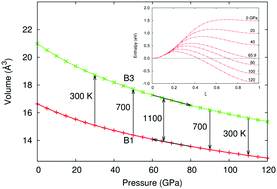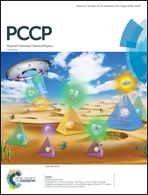Hysteresis and bonding reconstruction in the pressure-induced B3–B1 phase transition of 3C-SiC
Abstract
The determination of kinetic factors affecting phase metastability is crucial for the design of materials out of the ambient conditions. At a given temperature, the kinetic barrier associated with the reconstruction of the bonding network of a pressure-induced phase transition can be only overcome at pressures where the available vibrational energy of the system is equal or higher than the corresponding activation energy. Our work demonstrates that these pressures provide boundaries to hysteresis cycles that can be evaluated following a three-step computational strategy: (i) total energy electronic structure calculations, (ii) determination of vibrational contributions by means of a simple Debye model, and (iii) description of the energetic profile along the transition path in the framework of the martensitic approximation. In the 3C-SiC polytype, our results reveal that the high pressure rock-salt (B1) structure can not be quenched on release of pressure unless temperature is close to 0 K. The B1 phase transforms back to the low-pressure zinc blende (B3) polymorph at 300 K if pressure is below 30 GPa, in very good agreement with experimental observations. These results are supported by a full characterization of the B3–B1 energetic transition profile in terms of the chemical changes of the bonding network topologically analysed with the electron localization function.



 Please wait while we load your content...
Please wait while we load your content...